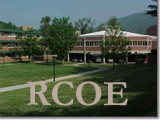Artifact Six: Ethnics Role Playing Activity
Competency 14.3: “Social, legal, and ethnical issues related to technology use.”
Context:
In class today we got into groups of three or four and had to do a role-playing activity for our class. Each group got a topic about something that is illegal to do on computers. My group acted out a scenario about a girl being on her teacher’s computer and accidentally finding her teacher’s computer grade bank. The girl and her friends are not making well in that class and have to decide whether they should change their grade. Another group acted out an illegal operation that happens all the time. A boy had just bought a software game and took it to his friend’s house. His friend made a copy of the software and then returned it. This is an illegal procedure that saves money and people are tempted to do it but they should NOT.
Another part of this artifact is an example of an Elementary School’s policy on acceptable use of computers. This is a great example if I ever need to make a policy for the school that I plan to teach.
Another part of the artifact is called, “Classroom Connect’s Connected Teacher-Internet Tips”. I found this artifact at www.connectedteacher.com/tips/aup.asp. This is a template that I could use as a starting point in developing an Acceptable Use Policy.
The fourth part of this artifact is a handout that I received in class called, “Netiquette” (Internet Etiquette). This handout is about the proper way to send e-mails. It has guidelines for composing effective email messages. One major aspect that it talks about is “spamming”. “Spamming” is forwarding messages to numerous amounts of people.
The last part of the artifact is an informative website called, “Hoaxbusters”. I found this at, www.hoaxbusters.ciac.org. This site deals mainly with how to tell which emails are true and false. Many people believe the things that they read in their emails, and this site shows all the hoaxes chain letter emails that many people have received.
Impact:
Because I will be teaching grades K-6, I want to make sure that my students don’t use the internet illegally. Now that I know what is illegal, I will make sure that my future students know also. I have also learned how to make an, “Acceptable Use Policy” and what all to include in that policy. As a future teacher, I will make sure that my school has an, “Acceptable Use Policy,” and if they do not, I will volunteer to make one or give them the internet site as to how to make one. One other thing that I am grateful that I have more insight on is false and illegal electronic mail. Now that I know this, I will be able to inform my future students on internet etiquette and hoax emails.
Alignment:
Because I have done a role-play in my class
about social, legal, and ethnical issues related to technology use, I have
met Competency 14.3.
I now have knowledge on a variety of illegal and improper uses for the
computer. Knowing this will help me educate my future students about
the proper and legal ways to use a computer.
